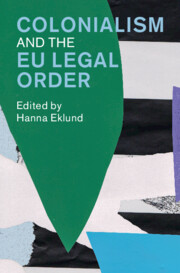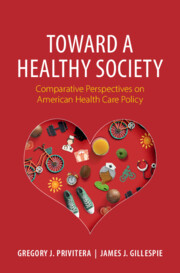Refine search
Actions for selected content:
3396091 results
Incorporating the possibility of cure into network meta-analyses: A case study from resected Stage III/IV melanoma
-
- Journal:
- Research Synthesis Methods ,
- Published online by Cambridge University Press:
- 15 October 2025, pp. 1-13
-
- Article
-
- You have access
- Open access
- HTML
- Export citation
Regional differences in Central Yiddish vowel length: Central Poland and the Unterland
-
- Journal:
- Language Variation and Change / Volume 37 / Issue 2 / July 2025
- Published online by Cambridge University Press:
- 15 October 2025, pp. 213-239
-
- Article
-
- You have access
- Open access
- HTML
- Export citation
16n2 + 2 revealed
-
- Journal:
- The Mathematical Gazette / Volume 109 / Issue 576 / November 2025
- Published online by Cambridge University Press:
- 15 October 2025, pp. 471-476
- Print publication:
- November 2025
-
- Article
- Export citation
An elliptical microstrip antenna with shifting of resonant bands using a recessed ground structure
-
- Journal:
- International Journal of Microwave and Wireless Technologies / Volume 17 / Issue 7 / September 2025
- Published online by Cambridge University Press:
- 15 October 2025, pp. 1172-1182
-
- Article
- Export citation
109.42 Euler’s constant via an integral
-
- Journal:
- The Mathematical Gazette / Volume 109 / Issue 576 / November 2025
- Published online by Cambridge University Press:
- 15 October 2025, pp. 534-538
- Print publication:
- November 2025
-
- Article
- Export citation
ON CLASSICAL DETERMINATE TRUTH
- Part of
-
- Journal:
- The Review of Symbolic Logic , First View
- Published online by Cambridge University Press:
- 15 October 2025, pp. 1-27
-
- Article
-
- You have access
- Open access
- HTML
- Export citation
The Lost Pillar of British Political Culture: Black Constructions of British Fascism, 1930s–1970s
-
- Journal:
- Journal of British Studies / Volume 64 / 2025
- Published online by Cambridge University Press:
- 15 October 2025, e91
-
- Article
-
- You have access
- Open access
- HTML
- Export citation

Commodities and Literature
-
- Published online:
- 14 October 2025
- Print publication:
- 09 October 2025

Colonialism and the EU Legal Order
-
- Published online:
- 14 October 2025
- Print publication:
- 18 September 2025
-
- Book
-
- You have access
- Open access
- Export citation

Toward a Healthy Society
- Comparative Perspectives on American Health Care Policy
-
- Published online:
- 14 October 2025
- Print publication:
- 25 September 2025

The Notion of Vitality in African Philosophy of Religion
-
- Published online:
- 14 October 2025
- Print publication:
- 13 November 2025
-
- Element
- Export citation
A Note on Photographic Archival Collections on Northern Ghana
-
- Journal:
- History in Africa , First View
- Published online by Cambridge University Press:
- 14 October 2025, pp. 1-14
-
- Article
-
- You have access
- Open access
- HTML
- Export citation
Green Party Entry and Conservative Backlash: Evidence from Germany
-
- Journal:
- British Journal of Political Science / Volume 55 / 2025
- Published online by Cambridge University Press:
- 14 October 2025, e128
-
- Article
-
- You have access
- Open access
- HTML
- Export citation
Climate policy strategies and corporate mobilisation in the European Union
-
- Journal:
- European Journal of Political Research ,
- Published online by Cambridge University Press:
- 14 October 2025, pp. 1-22
-
- Article
-
- You have access
- Open access
- HTML
- Export citation
ARCfieldLAB: Stimulating Networks, Knowledge Exchange, and Experimentation in Applied Sensor Archaeology for Dutch Field Research
-
- Journal:
- Advances in Archaeological Practice , First View
- Published online by Cambridge University Press:
- 14 October 2025, pp. 1-14
-
- Article
-
- You have access
- Open access
- HTML
- Export citation
Fluid dynamics and passive scalar transport driven by non-uniform tumbling of a prolate spheroid in simple shear flow
-
- Journal:
- Journal of Fluid Mechanics / Volume 1021 / 25 October 2025
- Published online by Cambridge University Press:
- 14 October 2025, A11
-
- Article
- Export citation
Associations between physical activity, adiposity, appetite and metabolic health in adolescent males
-
- Journal:
- British Journal of Nutrition , First View
- Published online by Cambridge University Press:
- 14 October 2025, pp. 1-9
-
- Article
- Export citation
Antimicrobial perceptions and stewardship practices among community pharmacy dispensers in Nepal
-
- Journal:
- Antimicrobial Stewardship & Healthcare Epidemiology / Volume 5 / Issue 1 / 2025
- Published online by Cambridge University Press:
- 14 October 2025, e259
-
- Article
-
- You have access
- Open access
- HTML
- Export citation
Religion Is Sometimes Raced: Christian Nationalism as In-Group Protection
-
- Journal:
- Perspectives on Politics , First View
- Published online by Cambridge University Press:
- 14 October 2025, pp. 1-23
-
- Article
-
- You have access
- Open access
- HTML
- Export citation
Fit-for-purpose validation of hair cortisol concentration as a biomarker of dairy cow welfare
-
- Journal:
- Journal of Dairy Research , First View
- Published online by Cambridge University Press:
- 14 October 2025, pp. 1-9
-
- Article
-
- You have access
- Open access
- HTML
- Export citation








